Digging into X2Ag-Ortho, p.4
March 28, 2012Defining Film "Speed"—The Sensitizer Sweet Spot
It's almost my mantra: "Who woulda thunk?" Right up there at the top of my "Cool!" list is the Rubik's Cube that is sensitization. At this point, I have far more observations than I have conclusions, but I'm blooming gelatin for a new batch (X2Ag-Ortho, v.5) even as I type this so I've promised myself to keep it short. If anyone who's reading this has sensitizing experience and observations to share, I'd love to hear from you. An article, short or long, for TLF would be particularly welcome.
Spectral sensitizers affect more than how colors are rendered as black and white values. They also affect overall speed, even without filtration. When an emulsion is sensitized for wavelengths of light beyond UV and blue-violet (the native range of AgBr) more of the existing total light is "available" to expose the film. So, a film sensitized as orthochromatic is faster than one that is unsensitized. That's not a surprise. What has been a surprise to me, as I've been working the erythrosin addition upwards towards a standardization, are the collateral effects.
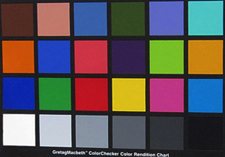
I had added more erythrosin to the second batch of X2Ag, and when it seemed that the overall speed was lower than with the first batch, I concluded that I'd hit a level of over-sensitization. That's when I decided to work up methodically to a standardized addition. But, it's turned out to be quite complex. First of all, it's hard to know for sure the perfect degree of monochrome value interpretation.
Below, going from left to right, is a straight desaturated invert of the color chart, i.e. Photoshop's interpretation of panchromatic film, followed by the chart worked in Photoshop to be a facsimile of orthochromatic color sensitivity, and last but not least, the chart photographed in early morning light with X2Ag-Ortho, v.4, using a medium yellow filter.
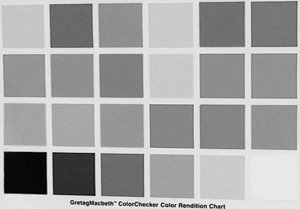
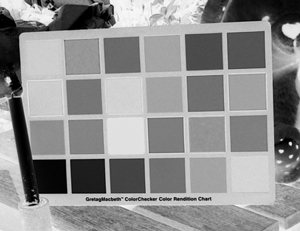
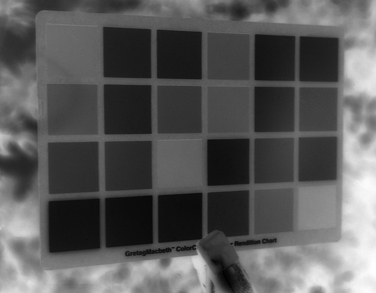
The X2Ag chart is a pretty close interpretation. And actually, the values on the color chart as recorded with a spotmeter follow very closely the relative values on the Photoshop faux-ortho chart—perhaps even closer than the more fully sensitized versions of the same recipe. But, here's the rub: the filter factor for the medium yellow filter was almost twice what it was with the more sensitized emulsion—5x as opposed to 2-3x. And there's another "but." The speed of the film is almost identical when shot without a filter.
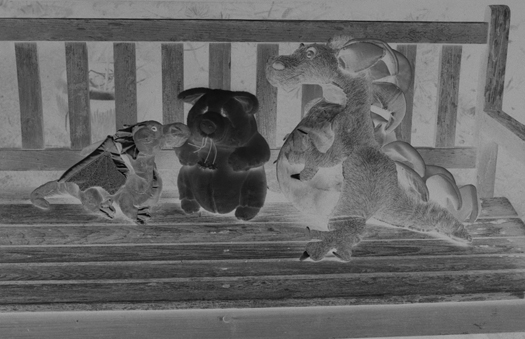
Version 2 and v.4, no filter, exposed identically within seconds of each other and developed together. Heavily overcast sky. ASA 50; D23. Although it doesn't show well on the screen, the v.4 negative is just a bit sharper and cleaner, but for all intents and purposes, they are identical.
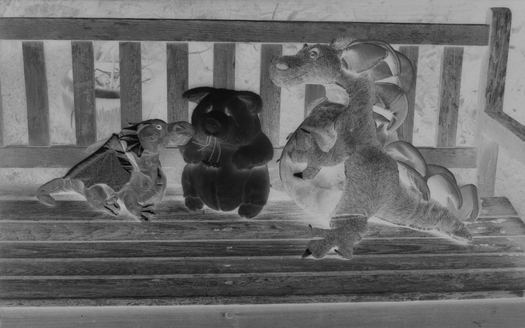

(Another) But, with a medium yellow filter, the speed changes drastically. The v.2 negative on the left (and the one belonging to the headline print two pages ago) was exposed at f/16 and ¼ second. The v.4 one below was at f/16 and ½ second. This probably would be a good situation for a graduated yellow filter.


Still, ½ second was fast enough to catch a truck crossing the bridge. I'm not yet in the habit of taking rapidly moving objects into account.
This an obvious place to repeat my No.1 mantra: Practice (a lot). Take notes. Learn. Repeat.
This weekend I'm heading off for a week of travel with roll film (if all goes well in the darkroom today and tomorrow!). When I get back, I'll have some more information to post about various developers, along with a step-by-step recipe for X2Ag-Ortho.
[Update: The full recipe is in The Light Farm book, available to read for free in Blurb preview. The link is on the home page.]
